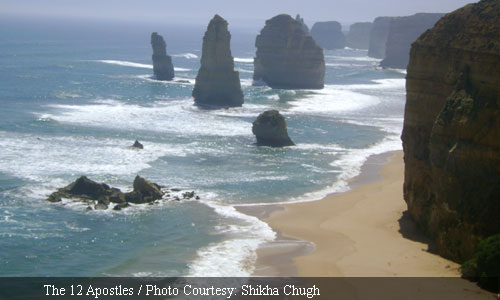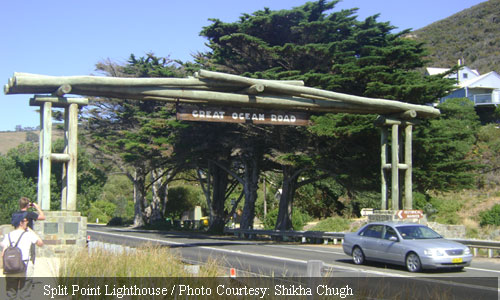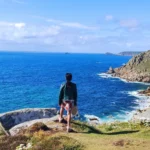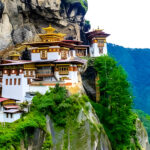A love affair with the Great Ocean Road

Although I spent a major part of my holiday in Sydney, my trip to Australia wouldn’t have been complete without a visit to the much celebrated 12 apostles!! The first thing I did after reaching Sydney was to book myself an air ticket to Melbourne and get myself tickets to the GREAT OCEAN ROAD tour. Before I even realised it, I was on the flight from Sydney to Melbourne and an hour and 20 minutes later I was in Melbourne admiring the city’s skyline. I had heard about the city’s buzzing tram link and I must say that it was quite an experience commuting by them. I woke up early the next day and reached the city to board the Great Ocean Road tour bus and after a quick coffee and bagel, was on my way hoping that the ocean breeze provided us some respite from the scorching Australian Sun!!!
The Great Ocean Road is a 243 kilo metre stretch of road along the south-eastern coast of Australia, between the Victorian cities of Torquay and Warrnambool. The road was built by returned soldiers between 1919 and 1932, and is the world’s largest war memorial; dedicated to casualties of World War 1. The winding road is now a major tourist attraction and goes through varying terrain hugging the coastline, from rainforests to beaches and cliffs composed of limestone and sandstone which are susceptible to erosion.
If you are going with a group of people, you should drive down yourself so you can stop anywhere you like on the way and soak in the breath taking views or you can even make it a leisure overnight or weekend trip and stay at any of the coastal villages. But if you’re single and all by yourself or if you are pressed for time, it is best to book yourself on a day tour. It’s reasonable and you get to meet travellers from all over the world! The Itinerary that I followed was great for a day trip and not tiring at all!

Our first stop, The Great Ocean Road Memorial Arch, was incidentally the 4th such arch. The first three I’m told were either demolished or destroyed by natural causes. Now, of course it was just a photo opportunity for tourists. One step out of the mini bus that we were commuting by and we knew that the heat is going to be a dampner to our spirits and the beaches will be providing the much awaited relief.

Our second stop, the internationally renowned BELLS BEACH – A surfer’s Paradise!!! We stood at the cliff overlooking the beach and I was stunned by the sights before me. The rising sun’s rays bounced off the water and I stood there incapable of blinking my eyes, as if they were glued to the shimmering ocean. After taking it all in, I turned to face the other end of the beach and understood why it was a surfer’s delight. Huge swell waves came crashing down with such force that I wondered how people surfed here. I was scared to even walk down to the beach for fear that the waves might just swallow me up, while the surfers rode the waves as if they had it all in their stride. It truly was a wonder of nature and yet at the same time you realised that you just shouldn’t mess with it, that nature’s might and fury are far worse than any man made weapon and that one should just humbly bow before it. The beach was also the venue for the world’s longest- running surfing competition – the Rip Curl Pro Surf & Music festival, which is held at Easter every year.

After the beach we headed to the Split point Lighthouse which again offered stunning views of the ocean and the coastline. Needless to say that Bells beach and the Lighthouse had served as a backdrop for many movies.

Soon we were on the road again, following the coast, losing ourselves in the scenic spectacle of rugged cliffs, exquisite small sandy coves, spectacular rock formations and quaint fishing villages. We stopped for a while at Lorne, where we waited for no further instructions from the tour guide and headed straight to the beach and plunged into the water.

After Bells beach, this was heaven as we didn’t have to worry about the rough waters, and in the hot Australian summer, who could really stop themselves from taking a dip in the ocean. Lorne is one of the many small towns on the Great Ocean Road en route the 12 Apostles. Every curve and bend on the road offered a different view of the ocean which played tricks on the naked eye and changed colours between various shades of blue every 5 kilo metres or so.
Next we stopped for a walk to spot some koalas in their natural habitat – the forests along the coast. However, we ended up spotting very few of these bears as the excessive heat and the resultant forest fires had almost destroyed their habitat. The very few that remain were perched so high up on the eucalyptus trees that it was almost impossible to see them.

After a sumptuous lunch of chicken, ham and bacon sandwiches and chilled cokes, we moved on to our next stop – Apollo Bay. Situated at the heart of the Great Ocean Road, it offered both swimming and surf beaches.

As earlier, there was no stopping us from wading into the water! The beach here was surrounded by hills, some of which clearly showed signs of forest fires and deforestation. It is no wonder that the Australian government is taking measures to ensure that the natural habitat of the koalas is maintained.

One last stop before we reached the 12 Apostles was the Maits Rest Rainforest walk. Maits rest walk is a part of the Otway National Park, west of Apollo Bay. A track wanders through the fern glades and the rainforest which has a thick cover of tall beech, messmate and other hardwoods. We took the 20 minute walk and it seemed like we had left the scorching heat of Victoria and were transported to another land. The thick tree cover allowed the sun’s rays to barely peek through its leaves. The temperature suddenly dipped which was a welcome change and the walk was exactly what we needed after the sumptuous lunch and the sun bathing on the beaches.
Finally, we were on our way to the much anticipated destination. All the earlier stops could not even classify as teasers to what awaited us. Nothing could prepare me for what I was going to witness soon. The 12 Apostles is a collection of limestone stacks off the shore of The Port Campbell National Park, by the Great Ocean Road. The nine original apostles were formed due to erosion approximately 10 – 20 million years ago.
The harsh weather conditions from the southern ocean gradually eroded the soft limestone to form caves in the cliffs, which later became arches and due to further erosion by the winds and waves collapsed leaving rock stacks up to 45 metres high. Today only eight such stacks remain, the last one having collapsed in 2005.
When they finally came into view, the sight was so majestic and impressive that one became a ball of emotions. You forget whether to hold your breath or to stop blinking so that you didn’t miss a thing and the moment stayed with you forever. The ocean was so rough that you could hear its fury even before it came in sight, the waves crashing against the rocks, its white foam spraying everything around. No wonder then that we were not allowed to go to the beach here. So we enjoyed the view from the walkways built atop the cliffs. The Ocean was a different shade of blue from every angle that you saw it, the limestone rock stacks standing up against the blue ocean, the sun shimmering down on the waters, the waves crashing on to the beach, leaving their imprints on the sands of time – a sight so spectacular that it left you spell bound.

We spent almost over forty minutes trying to soak in as much of the breathtaking views as possible. Then I decided to go for a helicopter ride and to get an aerial view of this natural phenomenon. Reluctantly we move on to our last few sightseeing spots – the London Bridge and the Loch Ard Gorge, both visible examples of the erosion process in action. The Gorge named after the ship ‘Loch Ard’ which ran aground on a nearby island provided us with an opportunity to escape the heat yet again as we ran into the relatively calmer waters here. Some things to keep in mind while you are planning a trip to the Great ocean road – wear comfortable cotton clothes, covering as much of your skin as possible – else the flies and insects in the area get the better part of you. Carry lots of sunblock and your sunglasses and a hat. Finally drink lots of water as the heat is definitely going to dehydrate you.
After a long long day we finally reached Melbourne at 9:30 PM, the city was a burning furnace. That year they claimed was the hottest summer in 60 years. I still had another day in Melbourne and there was so much to discover about the city. But after a day full of visual treats and long walks, I dozed off almost as soon as my head hit the pillow, with thoughts of what all I could accomplish the next day in this city! So read this space for more on what you can do when you’re in Melbourne this summer!
[“source-ndtv”]




